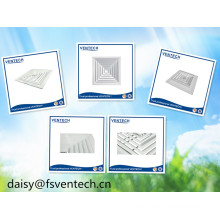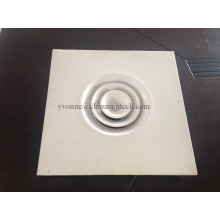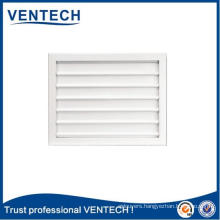Barcode technology is an automatic identification technology developed and developed in computer application practice. Since the advent of the 1960s, it has demonstrated a strong vitality and has developed rapidly. After more than 30 years of continuous improvement, improvement and development, it has been widely used in many areas such as commodity circulation. So far, there are more than 60,000 enterprises that have been allowed to use bar codes in China, and about 500,000 kinds of commercial products are identified by commercial bar codes. There are thousands of chain stores, warehouse supermarkets, and distribution centers that use business package automation technology to manage product automation.
Bar code printing technology is one of the important contents of bar code technology. With the large number of barcode technologies used in food and daily chemical products in China, the plastic packaging manufacturers that are supporting them must adapt to the development of this situation. According to relevant departments, there are many bar code printing failures on the market. Bar codes that do not meet quality requirements will not only fail to improve management efficiency, but will cause confusion. (Foreign large retailers have clear penalties for the quality problems of supplier bar codes.) Therefore, it is necessary to thoroughly study the barcode printing technology of plastic packaging. This article will initially discuss some of the issues and communicate with peers.
First, the main technical indicators of barcode printing
The specific standards for barcodes have been detailed in the national standard GB12904-91. Among them, printing technical indicators mainly include three aspects: width tolerance; appearance (including stains, porosity and edge roughness, etc.); reflectance and contrast.
Width tolerance
Since bar codes use different widths of bars and spaces to represent information, if the printing errors of bars and spaces are not strictly controlled, there may be problems such as the width of narrow and wide bars (empty) being close to or narrowing to almost disappear. This can make the bar code symbols unreadable or have a large number of errors. Therefore, the sum of the width and the width of the bar and the space and the sum of the width and the accuracy are the key to ensure that the decoder can receive the correct waveform and perform the decoding correctly.
The bar code width tolerances are mainly the blank width tolerance, the width tolerance between the edges to similar edges, and the character width tolerance. It describes the allowable error range of the strip and the space width in printing. If it exceeds this range, it will affect the reading effect.
2. Appearance
(1) Whether the surface is damaged, cracked, perforated or smeared.
(2) The surface has no dirt, ink lines, uneven ink and other phenomena.
(3) Whether it is too close to or overlap printing with other patterns.
(4) Stain, porosity, and edge roughness.
In the process of printing a barcode, for some reason, voids (deinking) sometimes occur in the air of the bar code symbol or in the ink in the bar. The bar code allows any number of stains and voids (deinking), but the following conditions should be met:
1 Its area does not exceed 25% of the circular area with a diameter of 0.8X.
2 Its area does not completely cover a circle with a diameter of 0.4X.
Where X is the width of the narrowest cell.
The requirement of the edge roughness is that the elements on all possible scanning trajectories can meet the requirements of printing dimensional tolerances.
3. Reflectivity and contrast
Contrast (PCS) refers to the ratio of the difference between the null and bar reflectivity and the null reflectivity. The reflectance and contrast (PCS) values should comply with the corresponding regulations.
Second, the problem should pay attention to the printing process
According to the above technical requirements of barcode printing, the following issues regarding the printing process should be analyzed, including design, plate making, printing, compounding, and packaging methods.
(-)design
1. Barcode position design
The position of the bar code should be considered in the actual position after the actual object is loaded (while the bar code of the transparent package cannot be displayed simultaneously with the bar code on the individual retail goods installed inside), and whether the design is reasonable or not will directly affect the actual reading effect. For bread, candy, bagged food, etc., the bar code position should generally be selected in the following order: bottom, back, side, but not in the bending, partition, corner position. For cylindrical, trilateral sealing, back sealing bags, generally selected on the back and pay attention to avoid heat-sealing parts and empty parts; for pillow-shaped packaging bags should be determined after the actual position of the packaging, to avoid the corner position. For surface bar codes, the surface curvature must not exceed 30°.
2. Dimensional design
The bar code size refers to the size of the left and right blank area including the bar code symbol. In general, the barcode magnification factor is proportional to the allowable dimensional deviation of the barcode printing. Magnification is generally controlled between 0.8-2.
In order to ensure the correct reading of barcodes, there should be a blank area with a certain width around the barcode. The size of the blank area varies depending on the type of barcode, at least 10 times the minimum strip width. According to the provisions of GB12904-91 “General Product Bar Code”, when the magnification factor is 1.0, the minimum widths of the left and right blank areas of the bar code are 3.63mm and 2.31mm, respectively. In order to obtain the best scanning effect, generally the left and right blanks are obtained. The size of the zone should not be less than 5mm wide.
In order to ensure that bar code reading does not affect the bar code reading success rate due to the height of the bar code, general bar code symbol may not be arbitrarily shortened. When it is really necessary to shorten the time, it should comply with the corresponding technical specifications.
3. Color design
Color design must ensure a certain degree of contrast. Different colors have different reflectivity to light, in which black is not reflective to visible light of various wavelengths, but white can reflect light of various wavelengths, so black bars are the best design.
At the same time, the effect of composite aluminum foil or aluminized film on hue should be considered. Aluminum foil and other specular reflection, the reader can not collect reflected light, the smallest reflectance, can be used as a strip color. The empty color must print white, yellow, orange, or red on the aluminum foil. This is called reverse printing. Some plastic packaging does not print the background color (empty color) but only the strip color, and uses the color of the content itself as the blank color. This method is not suitable. For example, the hot sauce packaging bag has a low reflectivity if the sauce color is used. The contrast does not form enough to affect reading.
Plastic film has a certain degree of gloss. For composite barcodes, its gloss will change the reflectivity of the strip and the space, causing a contrast change. Therefore, when designing a color, this factor should be taken into consideration to leave a certain margin for the contrast. .
(b) Plate Making
In addition to the basic requirements, the following two points should also be taken into account when making bar code printing:
1. Select the original film with extremely high precision and should be compatible with the gravure printing process (the correction of the strip width of the film is compatible with the gravure printing process).
2. The lines of the parts are relatively deep and the cables are relatively dense. This is because the lightness of the network cable is light, and it cannot guarantee sufficient hiding power. Part of the light is transmitted and the reflectance is reduced. If the network cable is too thin, the network cable is easily deformed, and the edges of the printed bar are not neat, which may easily lead to difficulties in reading and writing.
(III) Printing
Bar code printing is relatively higher than ordinary plastic packaging printing requirements. The following issues should be noted during the printing process:
1. The bar code and other patterns are printed at the same time. Sometimes, the hue adjustment is required by means of ink bleed and blade position adjustment. In this case, priority should be given to the reading of the bar code. If you can't balance it, you must remake the plate.
2. The firmness and abrasion resistance of the plastic film should be given sufficient attention, especially for surface-printed packaging. If the firmness and abrasion resistance of the printing ink are not good, the ink may be detached and the barcode may be damaged during the circulation of the product. Such as failure, resulting in no reading.
Polyethylene, polypropylene, etc. are all non-polar materials. Special attention should be paid.
3. The ink should maintain a certain viscosity, the viscosity should not be too small. If the viscosity is small, the hiding power of the ink is low and the reflectance is low. In particular, the contents are dark-colored products such as watermelon seeds, pickles, soy sauce, and soy sauce. If the empty hiding power is low, the color of the contents will darken the empty color and make the empty color closer to the brown color, resulting in lower contrast. Therefore, Increase the viscosity of white ink (or other background ink) and ensure sufficient hiding power.
4. Select high-quality ink to avoid the appearance of ink and other phenomena. The ink should have a high transfer rate to ensure the density of the ink. In addition, the ink should also have sufficient high temperature stability to prevent the barcode from changing color during compounding and post-processing.
5. Strictly control the printing tension, drying temperature and other process conditions, try to avoid shrinkage changes in size.
(d) Compound
Two points should be paid attention to in the compounding process;
1. Stretching. In the compounding process, if the temperature of the drying oven is too high or the tension is too high, film stretching will occur, resulting in deformation of the barcode. Therefore, the drying oven temperature and various tensions must be strictly controlled to avoid stretching.
2. If adhesives are added during the compounding process, the film must be protected from creases at the place where the AC agent is applied. Although wrinkles can be removed in front of the composite head, due to the solvent containing ethyl acetate, wrinkles under the pressure of the coating roller and the pressure roller may cause the ink in the bar code portion to be dissolved and cause breakage. Affect the reading effect.
(v) Packaging methods
Inflatable packaging has the same appearance as ordinary packaging, so it has no other influence on barcode printing and reading, and vacuum packaging and shrink packaging should be given some attention.
1. Vacuum packaging, because the contents of the package are mostly irregular shape, vacuum packaging bag tightly attached to the surface of the contents, an irregular three-dimensional shape, the surface is not smooth, so that the bar code deformation can not be read. Therefore, the vacuum packaging inner bag should not be directly printed bar code, an additional bag printing bar code and other graphics.
2. Heat-shrinking packaging: For the heat-shrinkable packaging film used in beverages, fruit and milk bottles, when printing barcodes, consider the position of the barcode after the film shrinks; secondly, calculate the vertical and horizontal shrinkage times, and make a bar code when making a plate. The size is adjusted in advance; thirdly, a high shrinkage film with uniform shrinkage is selected. At the same time, ensure that the strips are in the same plane after heat shrinking.
Third, bar code plastic gravure in the common faults and solutions
The common faults described below are minor defects if the failure is not serious for packaging printing outside the bar code. However, for bar code printing, even if it is a very slight flaw, it will directly affect the reading effect and must be taken to avoid it. Therefore, in a certain sense, bar code printing can be said to be stricter than the printing requirements of other parts.
Knife line
The “knife line” refers to the fact that the ink on the portion of the plate that has no pattern lines is not scraped and is transferred to the object to be printed, and line-like contamination occurs at the place where the ink is not allowed (the appearance of an unsightly silk path). In general, it takes a period of time for printing to take place and a certain number of impressions are printed before this failure occurs. Printing inks, printing plate rollers and doctor blades are the three main factors affecting the printing knife line, and environmental printing conditions also have a certain influence on the printing knife line.
the reason:
(1) It has a lot to do with the fineness and quality of the ink (squeegee fitness). The phenomenon of high-grade ink is lighter, while that of low-grade ink is heavier. Improper substances, coarse particles, and foreign substances in the ink can lift or damage the blade, and can form a knife line.
(2) Roller finish and aluminum plating quality are poor.
(3) The accuracy of the platen roll machining is not enough, and the eccentricity of the platen roll causes impact on the blade to become the cause of the blade line. At this point you need to re-install or correct.
(4) Bad doctor scraping state.
(5) The viscosity of the working ink is too large, the layout ink is excessively dry, the friction between the plate roller and the blade is relatively increased, and it is difficult for the blade to scrape the ink on the plate surface. (When drying is too late, a trace amount of ink adhering to the non-line portion of the plate roller will be transferred to the film to form a platen).
(6) Adhesion of hard objects on the roll plate will directly damage the blade. Always check and wipe.
(7) Environmental conditions. When the humidity is too high,
Home > Industry Information > Barcode Printing Technology in Plastic Packaging
Barcode Printing Technology in Plastic Packaging
2021-08-15
Automatic packing film roll is made of food-grade material 100%, which have many excellent functions , just like Waterproof, moisture-proof, UV- proof, prevent leakage, Prevent food from odor, extend product preservation time etc, our products have got the certificate of QS , FDA , SGS ,ROHS, ISO9000 and ISO14000 for many years ago, you can pack cosmetic , facial mask, medication and food safely , the bag's size, shape and colors are based on your requirements, for the printing you can choose it from 1to12 colors, the products have sold to Europe, America, Japan, Korea, Middle East, southeast Asia and other countries , we can provide the best quality and price for you, please contact us freely if you need.
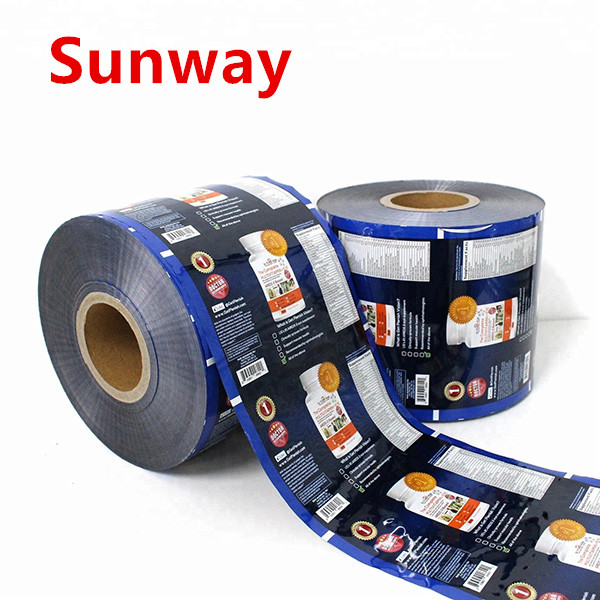
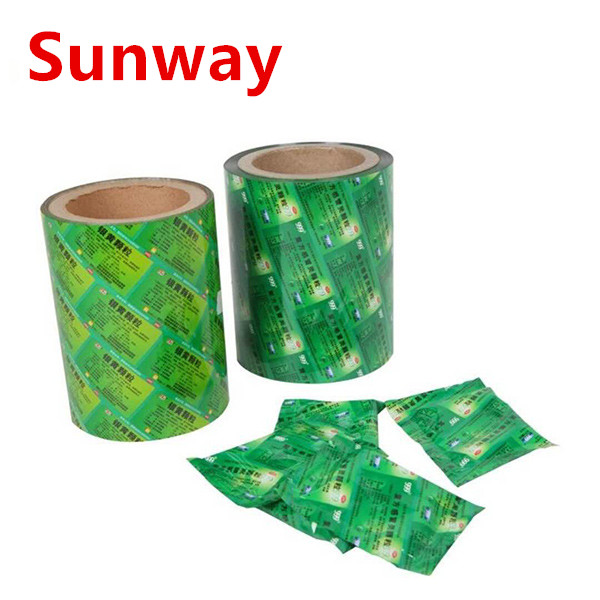
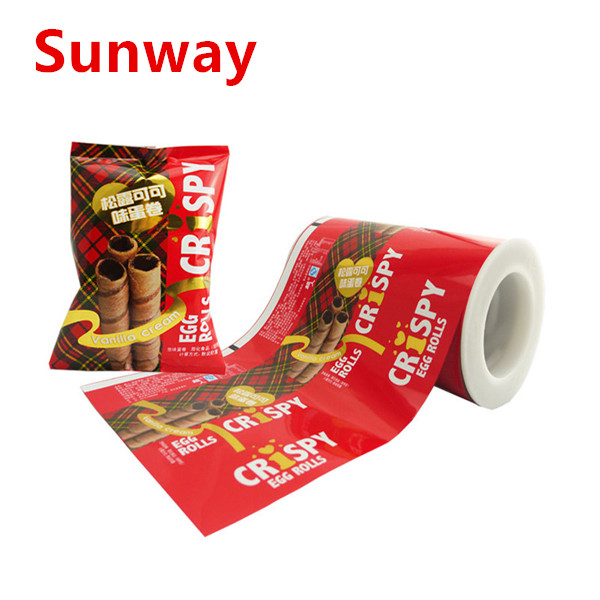
Packaging Bag In Roll, Packaging Film Roll, Plastic Packaging Roll, Plastic Roll for Packaging
Husan Air Conditioning Equipment Co., Ltd. http://www.sunwaypacks.com
